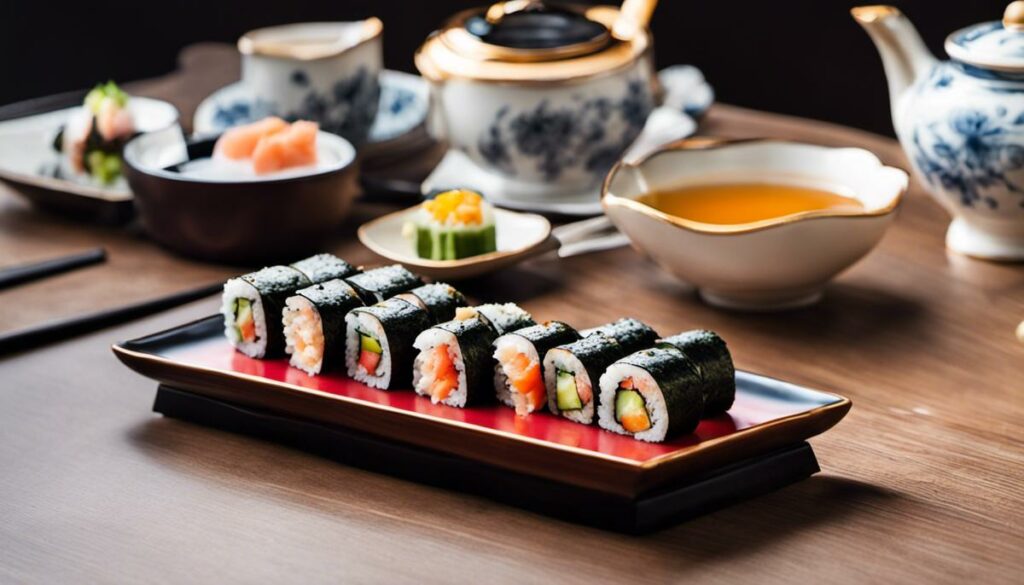A culinary encounter of a special kind awaits those who get involved in the art of sushi and tea pairing. Armed with the subtle weapons of taste and aesthetics, this composition of tradition and modernity takes the senses on an incomparable journey. Sushi rolls are skilfully combined with carefully selected teas, with each combination promising its own unique taste experiences. It is not only the harmony of taste that makes this art form so fascinating, but also the visual presentation that includes colors and textures, and the deeper social and cultural meanings hidden in every cup of tea and piece of sushi.
The Art of Sushi and Tea Pairing
From the first bite of a piece of delicate sushi, followed by a refreshing sip of hand-picked tea, it immediately becomes clear that the combination of these two elements goes beyond a simple culinary experiment. Rather, it represents a perfect harmony between tradition, craftsmanship and taste. The art of sushi and tea pairing is far more profound than it might seem at first glance and has a considerable impact on the taste experience.
Sushi, an indispensable element of Japanese cuisine, is often cited as an example of minimalism at the dinner table. Each piece is a small work of art, whose appearance, texture and taste represent the tradition and craftsmanship of the sushi master.
Tea, on the other hand, offers a range of flavor nuances that can vary from sweet, sour, bitter, mild to strong. It plays an equally important role in the culinary culture of many nations, especially in East Asia.
When sushi and tea meet, a door opens to a whole new taste experience. They complement and intensify each other’s aromas, resulting in an impressively complex taste experience. But it’s not just about the taste. From the careful selection of ingredients, to the preparation and the actual consumption, the combination of sushi and tea invites you to experience and enjoy the art of eating.
For example, a green Sencha tea, with its light, fresh taste, would enhance the aroma of a tuna sushi, while a strong black tea would provide a powerful contrast to a mild salmon sushi.
The art of sushi and tea pairing offers a whole new dimension of tasting. It requires specialist knowledge, experience, but also the courage to try out different things and discover taste experiences. It is certainly an art worth trying to add that certain something to everyday enjoyment and celebrate the beauty of life.
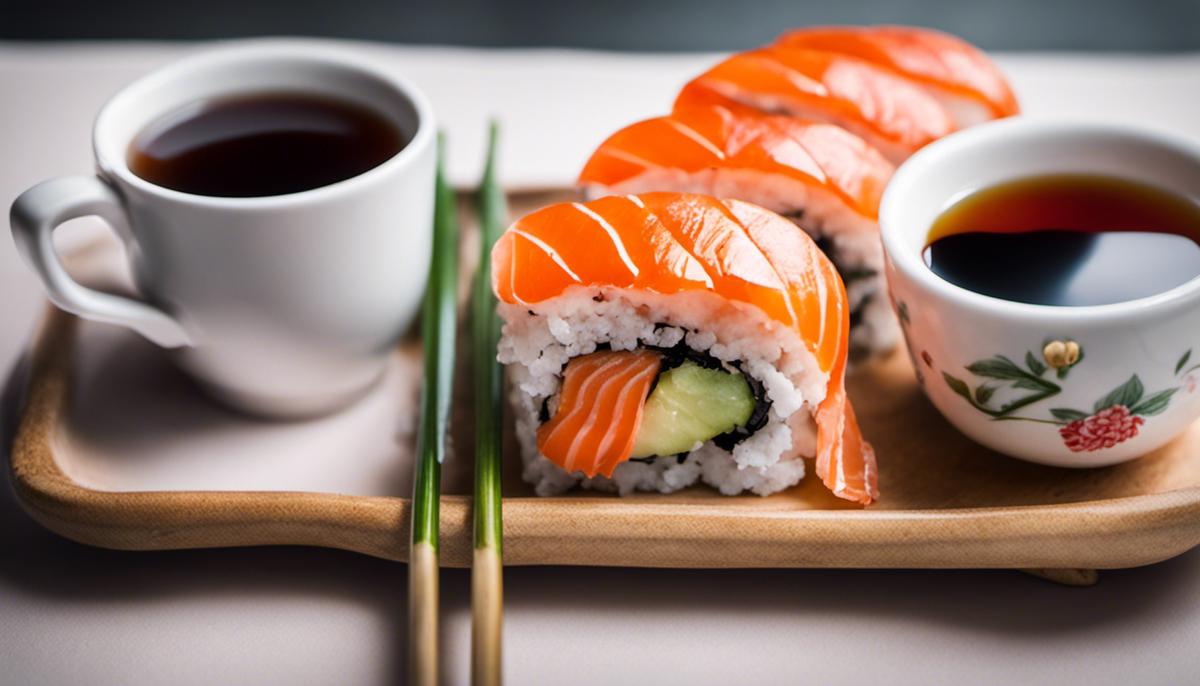
The Aesthetics of Sushi and Tea Pairing
Sushi and tea: an aesthetic that touches the senses and the soul
Surround yourself with beauty and you will see it every day; this is a motto that we often hear and share. This is also the case with the pairing of sushi and tea, which not only tickles the palate, but also pleases the eye. After all, it’s a feast for the eyes.
The visual delight begins with the preparation. If you look over the shoulder of the sushi masters (“shokunin”), you will experience a combination of aesthetics and professionalism. Every hand movement, every cut with the knife is precise and at the same time an art in itself, which is then reflected in the presentation of sushi on the plate.
Tea culture is just as rich and focuses less on the art of making and more on the art of experiencing. The smell of the brewed tea, the sight of the tea leaves floating in the pot and the warmth of the cup in the hand are sensual experiences that the enjoyment of tea offers and that go far beyond pure drinking.
Sushi and tea pairing is all about finding the harmonious connection between these two worlds. This is a creative task that involves recognizing and combining flavor profiles to create a new culinary experience. Flavors of tea such as sweet, umami, bitter, sour and salty help with this. They all play a role in deciding which tea goes best with which sushi and can bring out highlighted or contrasting notes.
In the end, the joy of the aesthetics of the whole remains. A well-matched sushi tea couple is more than just a meal. It’s like a work of art to look at, cherish, and enjoy. It represents a lifestyle based on aesthetic appreciation and culinary enjoyment and shows that there is more to life than just the mundane.
So, let’s celebrate the art of sushi and tea pairing and incorporate it into our daily lives. In doing so, we turn the ordinary into something special and create moments of joy and enjoyment that make every day an experience. With this in mind: Bon appetit and a good sip of tea.
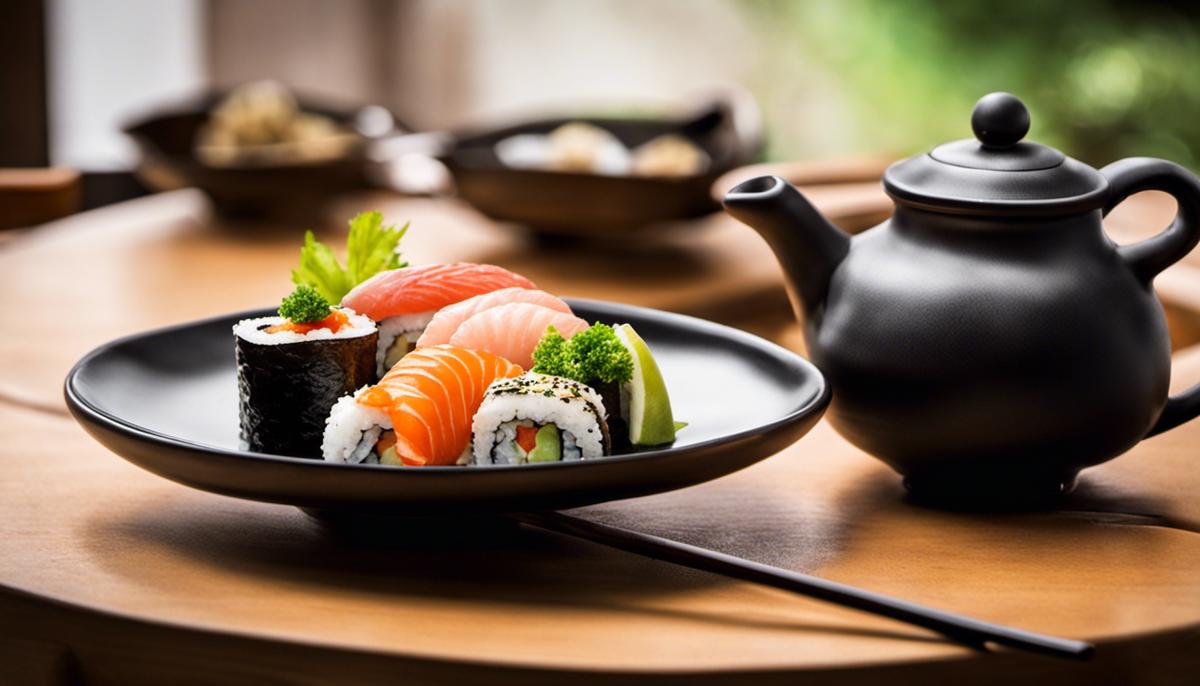
The Role of Tea Culture in Sushi Enjoyment
An often overlooked detail in sushi and tea culture is the ritual itself. The ceremony of preparing and presenting sushi and tea shapes the experience as a whole, creating an atmosphere of awe and appreciation for the sophistication of the craft. A conscious tasting of sushi and tea immerses you deep into a world of texture, taste and aesthetics. It’s not just about the food itself, but also about the stylish presentation and subtle dramaturgy of the process.
Tea culture, especially in Japan, is a sensual journey that appeals to all the senses. The harmonious movements of pouring the tea, the gentle sound of steaming water hitting porcelain, the feeling of the tea bowl in your hand and, of course, the taste and aroma of the tea offer a meditative experience. This awareness and acceptance of the present are aspects of tea culture that can be transferred to the world of sushi tasting to create a deep and fulfilling taste experience.
It’s the pursuit of perfection and deep respect for production – from the catch of the fish to the fine craftsmanship of sushi preparation – that makes this culture so appealing. The same can be said for tea harvesting and processing, whether it’s the hand-picked buds of a superb green tea or the careful blending and fermentation of a robust black tea.
To find the right sushi tea combination, it is crucial to understand the different flavor nuances of sushi and tea. It’s about perceiving nuances and creating a harmonious connection between the elements. The aroma of the tea should complement the sushi without obscuring its uniqueness. Conversely, a balanced tea can bring out the flavor complexity of the sushi and open up a new level of enjoyment.
Finally, there is a true aesthetic and artistic pleasure in a successful sushi tea pairing. It’s a delight to find the perfect balance between the subtle sweetness, the slight acidity, the subtle bitterness, and the earthy robustness. This harmony reflects a seemingly effortless, but actually hard-earned aesthetic lifestyle that appreciates the subtleties of taste and the nuances of indulgence.
Ultimately, incorporating sushi and tea pairings into everyday life can cause special moments of joy and enjoyment to crystallize in the day’s routine. They offer an opportunity to pause, appreciate what’s ahead, and incorporate a little piece of art into our routine meals. It’s not just a meal, it’s a sensory experience, a ritual and an opportunity to enjoy the beauty of everyday life. Sushi and tea are more than just food – they’re a lifestyle.
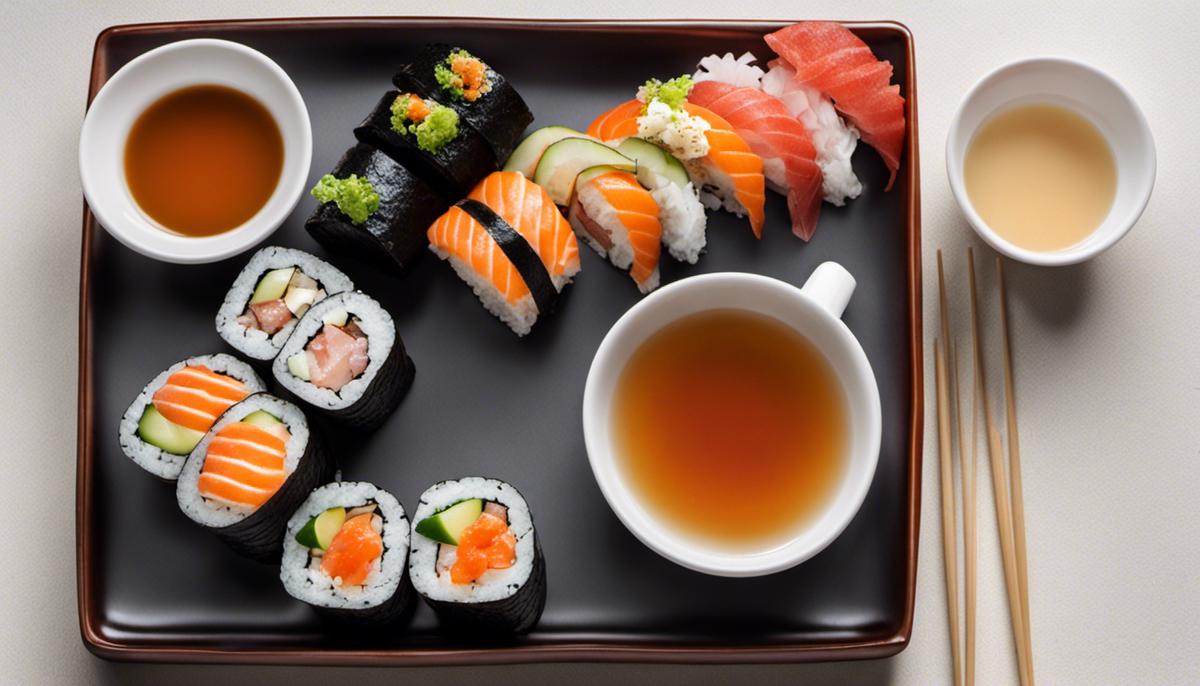
New trends in sushi and tea combinations
Sushi and tea are truly noble companions that know how to bring out subtle flavours.
But what are the latest trends that are revolutionizing this intimate double?
Contrary to the traditional idea that sushi and tea should only support each other harmoniously, it is now also a matter of creating daring flavor combinations.
Here, the bitter and umami-rich nuances of matcha tea with the sweet taste of Tamago sushi have been very well received. A true revolution for the taste buds, which completely changes the previous impression of a sushi-tea combination.
In addition to the reinvention of flavor pairings, the quality of the ingredients also plays an essential role.
With this in mind, local tea farmers and sushi chefs have teamed up to offer high-quality pairings together.
For example, the Japanese Gyokuro tea, in combination with shrimp sushi, created from seafood of the respective region.
Another trend that is gaining in importance is the tasting of tea and sushi in specially designed environments.
The quasi-meditative atmosphere of a tea ceremony integrated into the enjoyment experience of sushi – a true sensual delight for all lovers of Japanese culture.
The sushi and tea pairing also takes a health-conscious approach.
The green sencha tea and sushi made from fermented foods such as kimchi sushi stand out here.
The healthy properties of both, in a perfect combination, are ideal for people who want to eat an enjoyable and healthy diet.
Overall, it’s an exciting time for anyone interested in the art of sushi and tea pairing.
With new elements such as inverted flavor pairings, quality-oriented regional ingredients, the design of tasting rooms, and the inclusion of healthy pairing options, this complexity of the topic prepares for enjoyment that looks far beyond the culinary horizon.
Cheers to the aesthetics of daily enjoyment, elevating the simple act of eating and drinking to a meticulously choreographed spectacle where every detail counts.
Welcome to the promising world of sushi and tea pairing!
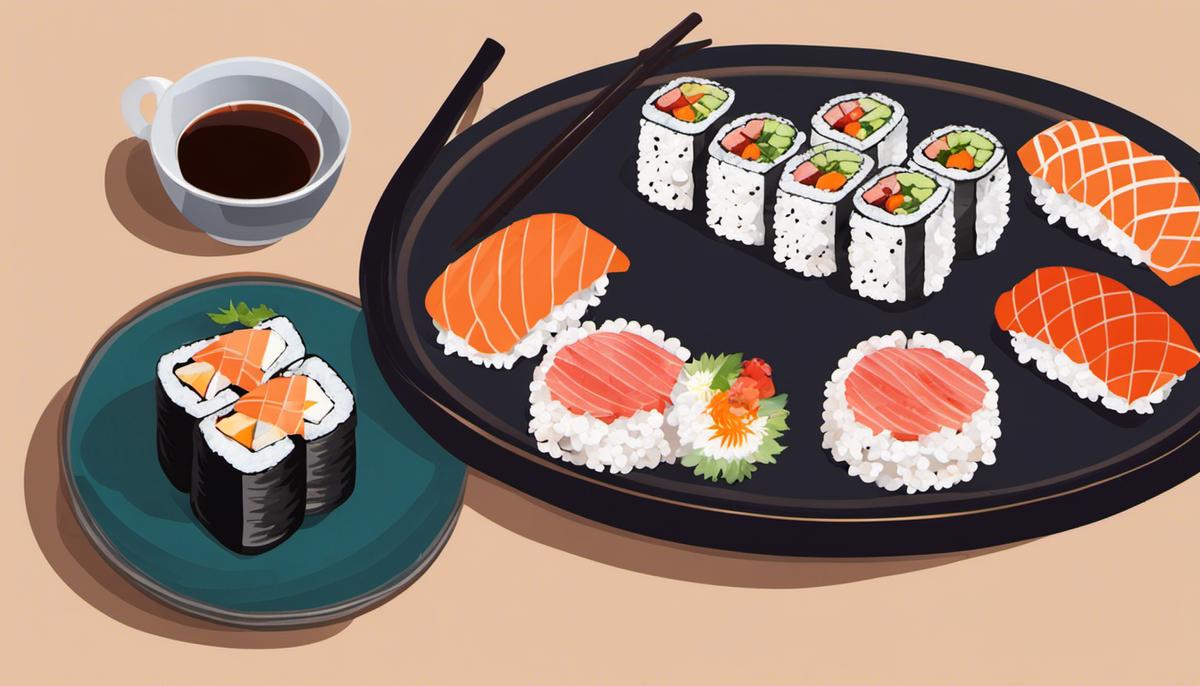
The world of sushi and tea pairings remains a fascinating field, full of endless possibilities and constant change. New culinary trends bring innovative concepts and unique flavor profiles to the forefront, constantly changing and redefining the traditional mating game. But despite the constant change and innovation, one thing always remains the same – the profound meaning and appreciation that lies in the art of sushi and tea pairing. Whether as a tribute to past tradition or as a trailblazer for new enjoyment experiences, it is undeniable that the combination of sushi and tea provides a fireworks display for the senses that will be remembered long after the last bite.
